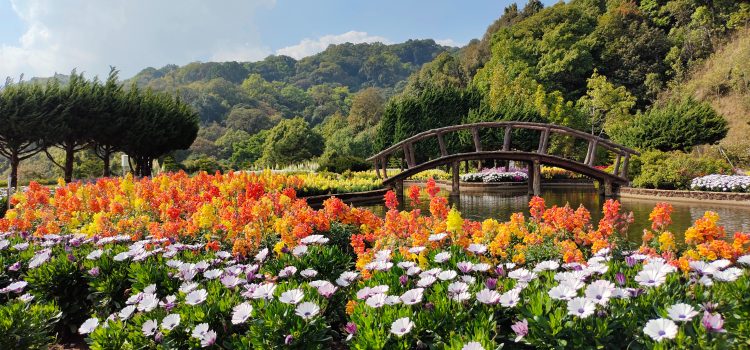
Welcome to the world of sensory gardens! If you’re looking for a way to add some texture, fragrance and excitement to your outdoor space, then a sensory garden is the perfect solution. Sensory gardens are designed with all five senses in mind and offer an immersive experience that can soothe the soul, uplift the mood and provide endless inspiration for creative minds. In this blog post, we will explore how you can incorporate fragrant and textured plants into your space to create a beautiful sensory garden that will leave your visitors in awe! So put on your gardening gloves and let’s get started!
The Importance of Fragrance
Fragrance is a vital element of any sensory garden. The sweet aroma of blooming flowers can instantly transport you to a peaceful and calm state, while the sharp scent of herbs can energize your senses and promote focus.
Fragrant plants like lavender, thyme, jasmine and roses have been used for centuries in aromatherapy practices to reduce stress levels, alleviate anxiety and promote relaxation. They also attract pollinators such as bees, butterflies and hummingbirds that help in maintaining ecological balance.
Incorporating fragrant plants into your sensory garden not only adds beauty but provides therapeutic benefits as well. You can create different themes within the garden by using specific fragrances for each section.
When choosing fragrant plants for your sensory garden, consider factors such as bloom time, hardiness zone and soil type to ensure they thrive in their environment. With proper planning and care, you’ll have an aromatic oasis that will soothe your soul every time you step into it!
Incorporating Texture into Your Garden
When it comes to designing a sensory garden, incorporating different textures is just as important as adding fragrance. The way a plant feels when you touch it can be just as stimulating to the senses as its scent.
One way to add texture is by choosing plants with different leaf shapes and sizes. For example, you could mix large, smooth leaves with smaller, more textured ones for an interesting contrast. Another option is to include plants with interesting bark or stems that add another layer of tactile interest.
Adding rocks or other hardscaping elements can also help create texture in your garden. A pathway made of rough stones or a wall built from natural stone can provide additional sensory stimulation.
Don’t forget about incorporating sound into your garden design too! Plants like ornamental grasses rustle in the wind and create a soothing sound that adds yet another dimension to your outdoor space.
Adding texture to your sensory garden provides a unique experience for both sight and touch that will keep you coming back for more.
How to Choose the Right Plants for a Sensory Garden
When designing a sensory garden, choosing the right plants is crucial for creating an immersive and engaging experience. Here are some tips to help you choose the perfect plants for your space.
Consider Fragrance: Fragrant plants like lavender, roses, and jasmine can add a delightful fragrance to your sensory garden. However, it’s important to consider whether certain scents may be overpowering or cause allergies in visitors.
Think About Texture: Incorporating different textures into your garden adds another layer of sensory stimulation. Consider using soft foliage like lamb’s ear or fluffy flowers like astilbe alongside more rough-textured plants such as succulents or ornamental grasses.
Choose Plants with Varied Colors: Adding pops of color throughout your garden can create visual interest and appeal to multiple senses at once. Choose a variety of colors that complement each other rather than clashing.
Prioritize Accessibility: If you’re designing a public space, prioritize accessibility by choosing plants that are easy to navigate around and won’t obstruct pathways or views.
Research Plant Care Requirements: Make sure you research the care requirements for each plant before adding it to your sensory garden. Make sure they will thrive in your specific climate and soil conditions so that they continue to delight visitors for years to come!
Conclusion
Designing a sensory garden is not just about creating an aesthetically pleasing space. It’s about engaging all of your senses to create a truly immersive experience. Incorporating fragrant and textured plants into your garden can be an excellent way to achieve this.
When designing your sensory garden, it’s essential to consider the different types of plants that will appeal to each sense. Fragrant flowers like roses or lavender are perfect for stimulating our sense of smell, while textured foliage like lamb’s ear or ferns can provide a tactile experience.
By choosing plants carefully and incorporating them thoughtfully into your design, you can create a space that engages all of the senses and provides relaxation, entertainment, and therapy for yourself and anyone who visits.
In summing up, creating a sensory garden takes some planning but is well worth the effort in terms of both aesthetic beauty and mental health benefits. With careful selection of fragrant blooms with interesting textures combined with other elements such as water features or sculptures, you’ll have created an outdoor oasis that stimulates all five senses in no time at all!










